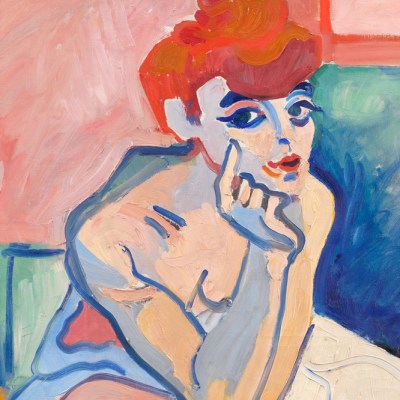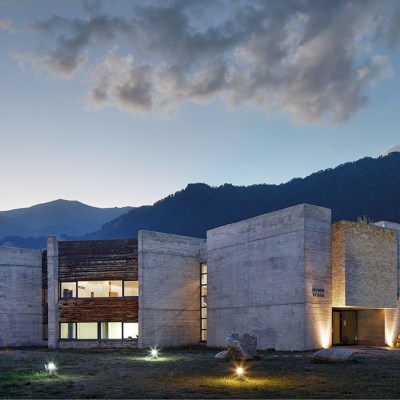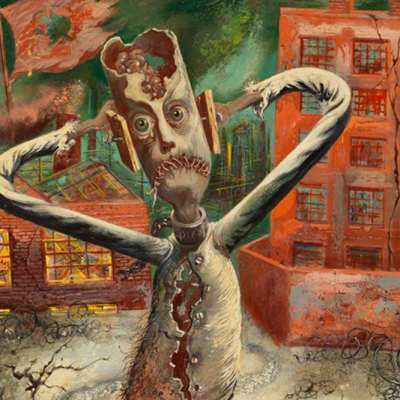On 9 April 1994, Karlo Kacharava suddenly collapsed while painting in the tiny apartment in Tbilisi he shared with his mother and sister. He died of a brain aneurysm shortly after, possibly the delayed result of a violent mugging in Moscow the previous year. He was just 30 years old. His death robbed Georgia of its most significant painter of the late 20th century. Now, 30 years after his death, his remarkable achievements are gaining international recognition.
Kacharava was the artistic voice of his generation – a one-man avant-garde. His status as a major artist was established posthumously, and he is now an almost cult figure in Georgian art. A bootstrap intellectual from a poor background, thanks to his immense erudition and cosmopolitanism, he took full advantage of the increased freedoms of the late Soviet era – and of the chaos that followed its collapse – to produce a body of graphic work that recalls that of Otto Dix in the Weimar era and of Basquiat in 1980s New York, and far more beside.
‘In Georgia, contemporary art really began with Karlo,’ says Irena Popiashvili, curator and dean of the visual arts, architecture and design school at the Free University of Tbilisi, who has done more than anyone else to bring Kacharava’s works to international attention. ‘He was a critic, he was a poet, he was an artist – and he was way ahead of his time.’ Now Kacharava’s time seems to have finally come, with displays at Frieze New York and a recent major exhibition at S.M.A.K. in Ghent, the catalogue of which has just been published.
Demand Everywhere (1990), Karlo Kacharava. Private collection. Courtesy Modern Art, London
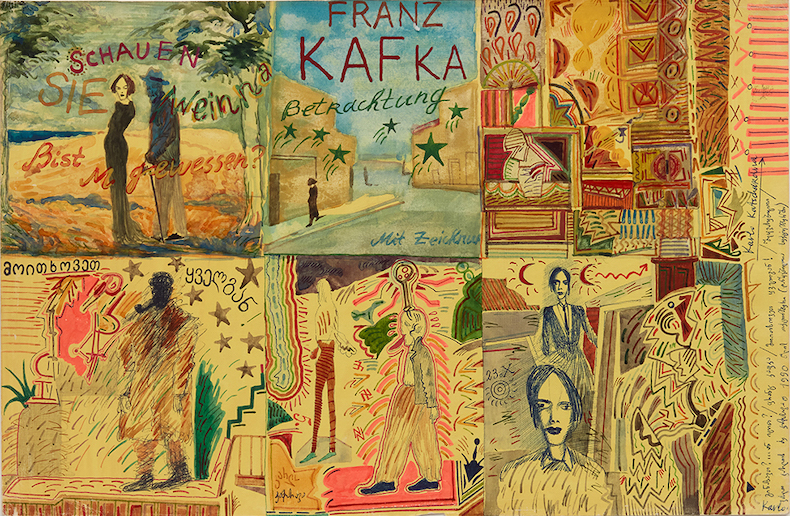
In the incredibly prolific decade between 1984 and his death, Kacharava produced academic work, art criticism, newspaper columns (two a week at one point), poems and a diary that is now an important text for the study of the period. He gradually moved from making small, private works to bigger, more confident compositions for the public, for exhibition and sale. But from the very start, Kacharava’s visionary style is his own: his works are imbued with a sense of storytelling, often autobiographical, while a magpie’s nest of references – to rock music, to friends, to artists both long dead and contemporary – provide an intellectual depth to the semi-grotesque, caricature-like figures playing out on canvases packed with text in Georgian, German and English.
‘It’s always storytelling,’ Popiashvili observes. ‘There is always a storyboard.’ In works such as Sentimental Traveler (1993), which provided the title of the exhibition in Ghent, a cast of greyscale characters including a woman with a bazooka and a young girl inhabit an overcast, vaguely German townscape with snippets of text in Georgian pointing to a backstory we are left to imagine. Other works are still more intensely storyboarded, looking like panels from a disturbing inter-war comic book, or plans for an unmade film by Fritz Lang. Indeed, the era in which Kacharava worked, one both of promise and of menace, is reminiscent of Weimar-era Germany, a comparison Kacharava was fully aware of.
‘Karlo loved German Expressionism,’ Popiashvili says. ‘Karlo is drawing a parallel between German Expressionism and the situation in Georgia at the beginning of the ’90s.’ Many of Kacharava’s figures – characters, really – could come straight from a biting cabaret show of the 1920s, laughing at the world as it careens over the edge.
Sentimental Traveler (1993), Karlo Kacharava. Courtesy the Estate of Karlo Kacharava, Tbilisi, and Modern Art, London
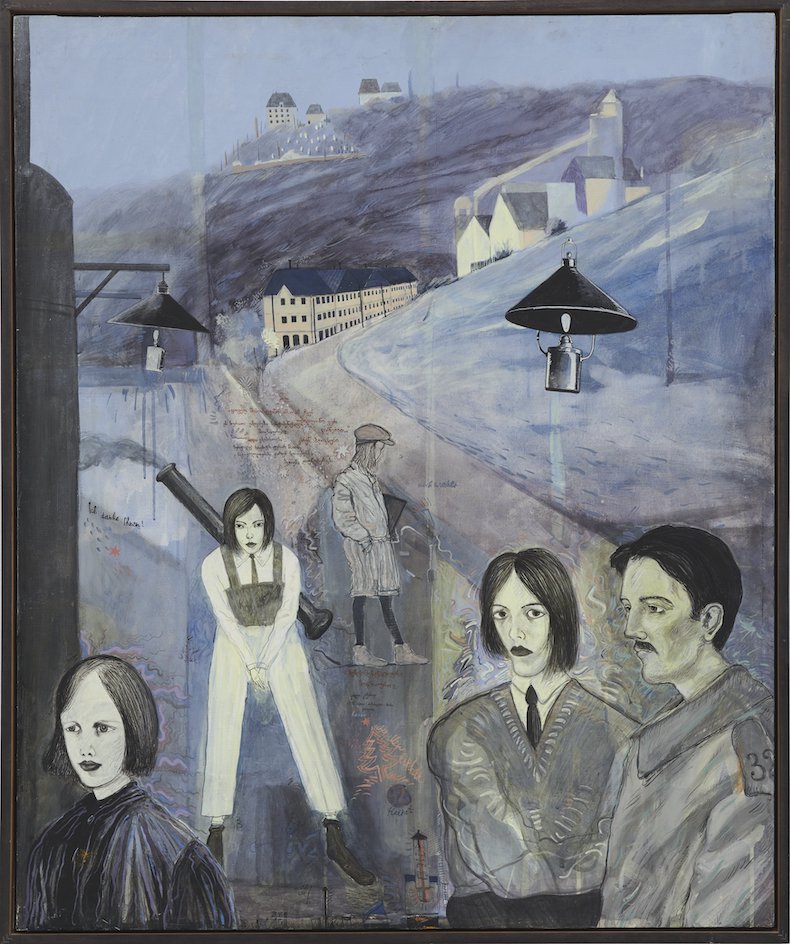
A recurring character in the work is the autobiographical or self-mythologised figure of Kacharava himself. In painting after painting there he is: brooding, balding and bearded, looking on at the central figures of the painting, joining the viewer in quizzical contemplation of the scene. In other paintings, most notably in the monumental General, Für Helena (1988), his largest canvas, he takes centre stage, albeit with a sense of irony: the diminutive artist playing the hero in the garb of a 19th-century military officer.
‘He had his dreams, he had his inner world,’ says Nana Kipiani, an art historian of the Georgian avant-garde, and a contemporary and colleague of Kacharava at the Chubinashvili Institute of Art History. ‘All his inner world you can see in the pictures. But it is his world, not something for display.’ This interiority runs throughout the work, as if the viewer is watching the artists work out his ideas for himself.
The dedication of the General painting, ‘for Helena’, is one among many dedications to female friends, lovers and inspirations. We see two sides of Kacharava in his paintings with women: in some he is the leading man, comforting, consoling, embracing. But just as often the script is flipped: we see an almost desolate Kacharava being hugged, receiving maternal or sisterly care from female figures larger, more dominant, more confident than him.
General, Für Helena (1988), Karlo Kacharava. Courtesy Karlo Kacharava Estate
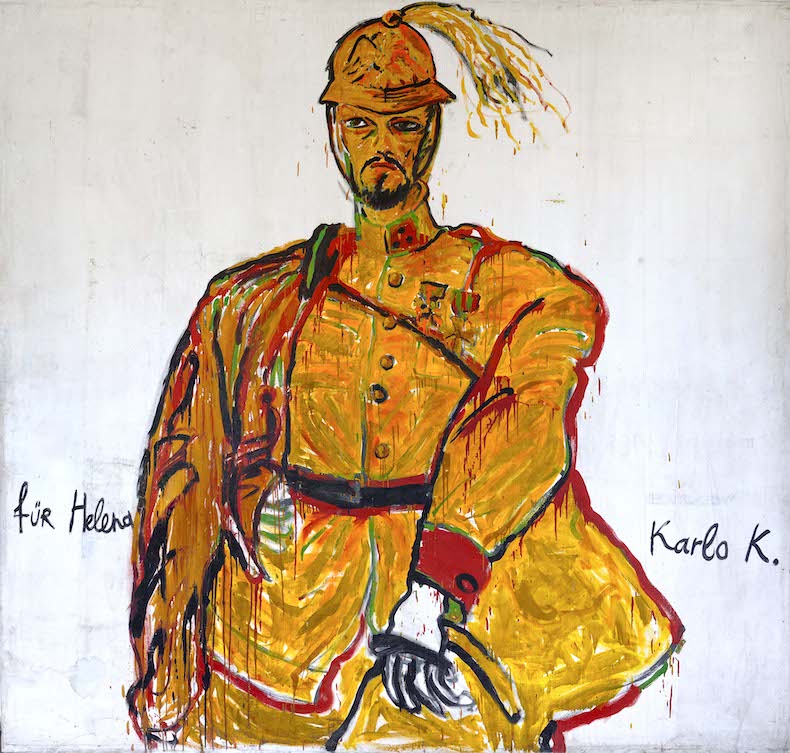
‘It’s almost unbelievable that he stayed under the radar for us in the West,’ says Liesje Vandenbroek, who curated the S.M.A.K. show alongside Karima Boudou and came across Kacharava’s work on a visit to Tbilisi. ‘Once we entered his apartment, it was like love at first sight. It was amazing to see this body of work, his books, the books he wrote, but also the books he was reading.’
The flat in question is a dowdy three-room dwelling in a khrushchevka, a kind of apartment block named after the Soviet leader who built them all over the USSR. It has barely been touched since Kacharava’s death and only a graffiti tribute by Gagosh, Georgia’s best street artist, distinguishes the block from the dozens of identical five-storey prefabs that surround it. Preserved by his sister Lika, a philologist, the apartment is now the unofficial Kacharava house museum (by appointment only). It hints at, through a vast multilingual collection of books, magazines and LPs, the ideas and influences that would be played out on his canvases and in his sketchbooks.
‘When you see Kacharava’s work and the references that he’s making, and how much he knows about contemporary art outside of the Soviet Union, it completely collapses the discourse,’ Popiashvili says. ‘When you look at his work you realise you don’t know what you think you know. He really switched the code on what artists are like behind the Iron Curtain. A guy from the total periphery of the Soviet Union: here he is, making in 1989 a crucifix painting with a Basquiat crown.’
Nick Cave (1992), Karlo Kacharava. Photo: Benjamin Westoby; courtesy Karlo Kacharava Estate, Tbilisi and Modern Art, London
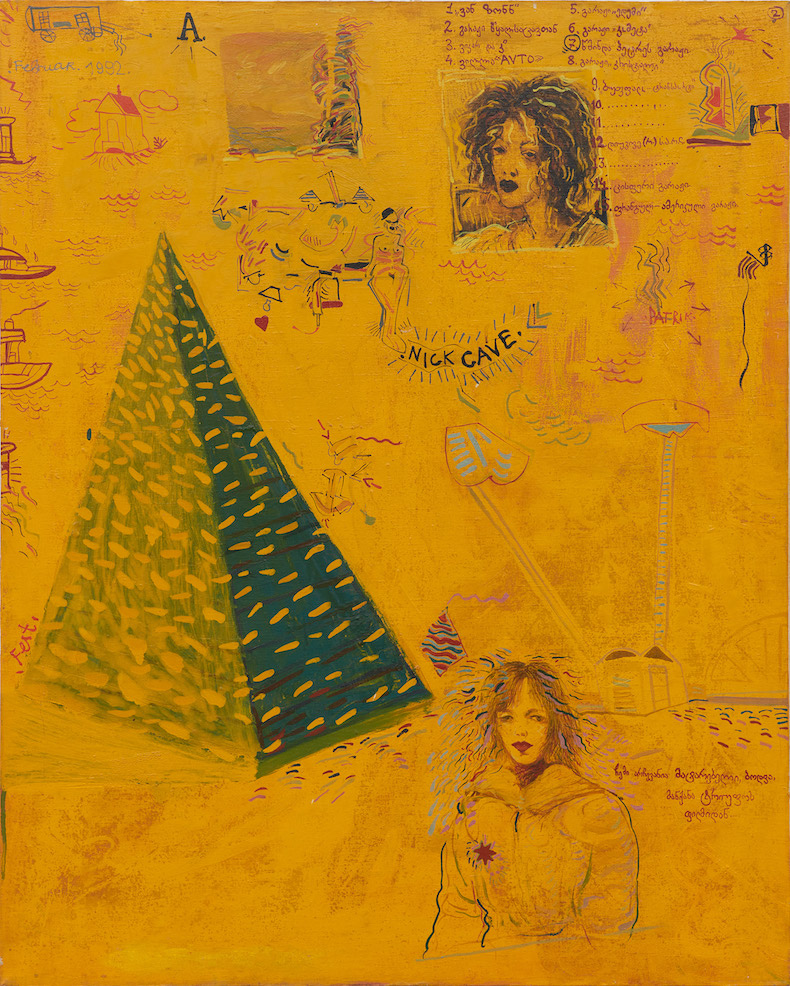
Crucifixion (1989) is Kacharava’s most direct nod to Basquiat, but contemporary references abound in his work. Lyrics by Nick Cave and Peter Gabriel, hat tips to painters such as Immendorf and Salome. ‘There was this huge black market back then,’ Popiashvili explains. ‘Obviously everyone wanted American jeans and French perfumes, but you could also get films and books and magazines on art.’ It was from this cultural contraband, these hauls of second-hand David Lynch videos and Polish design journals, that Kacharava assembled his art-historical samizdat, both in his art criticism and in his painting. ‘He was definitely considered to be a dissident. Just because of the sheer fact that he read so much,’ Popiashvili says.
As the USSR collapsed, Kacharava went from being a Soviet dissident to a critic of events in newly independent Georgia. In his diaries and in letters to friends he decried the extreme nationalism that characterised the period. Kacharava’s apprehensions came to pass: the instability and war that engulfed the country in 1992 and 1993 shattered the cosmopolitan, urbane Tbilisi society in which he lived. Street violence and power cuts prevented him visiting his studio. By the time of his death, Georgia was at its nadir, an almost failed state where gangsters and Soviet bureaucrats jockeyed for power. While his works are never explicitly political, they capture this era as no other artist has.
Almost immediately after Kacharava’s death, memorial exhibitions were held in Tbilisi’s few functioning venues, his poetry was published to the delight of a new generation of readers and people like Popiashvili began to popularise his works in New York and London. As the country became more stable in the mid 2000s and the Georgian cultural world began to put itself back together, Kacharava’s work became part of the foundations on which it was built.
Antitheater Creates New Values (1992), Karlo Kacharava. Photo: Robert Glowacki; courtesy Karlo Kacharava Estate, Tbilisi and Modern Art, London
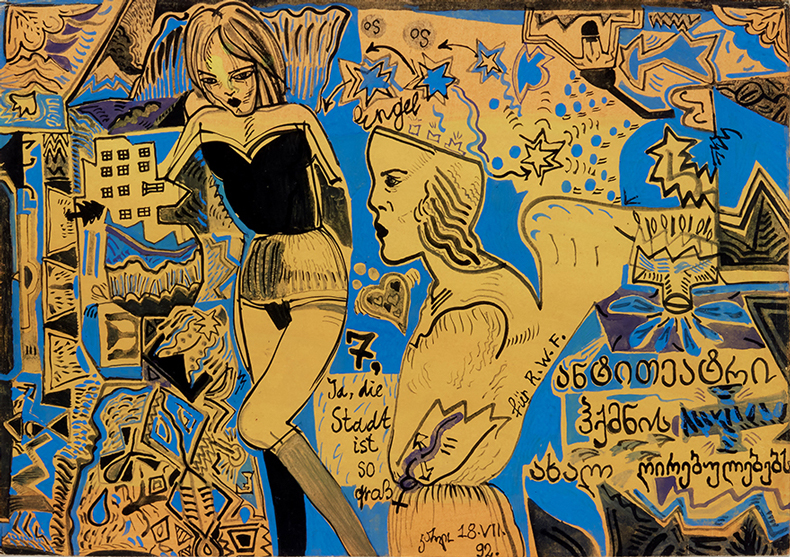
After a solo presentation at Frieze New York in 2022 and the S.M.A.K. show, there are tentative plans for more large-scale exhibitions and Popiashvili hopes that international museums will add his work to their collections. But it is important that Kacharava is not seen as ‘merely’ a Soviet or a Georgian artist. His work demonstrates that an artist working in Tbilisi in the 1980s was as much a part of global currents as one working in Paris or New York. ‘It’s high time for Western museums to start looking east with a fresh eye,’ Popiashvili says. ‘And Karlo is the perfect reason why.’
Karlo Kacharava: Sentimental Traveller is published by S.M.A.K.
